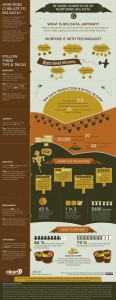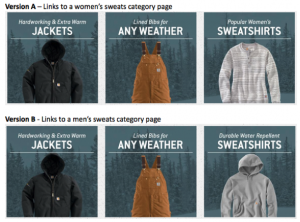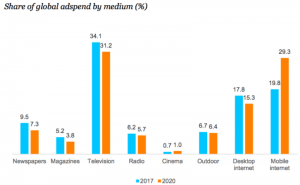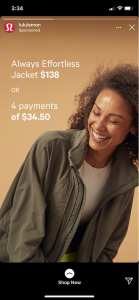LinkedIn lead generation and engagement approaches that worked 5 years ago when I founded my firm, Get LinkedIn Help, are only working with minimal results today. The buying process has changed drastically:
- Buyers don’t want to be hunted. Afraid of getting harassed with too much sales and marketing information is one of the top 5 reasons buyers don’t connect with vendors.
- Buyers don’t want a sales/buyer relationship. In fact, recent reports show that up to 75% of the buying decision is made before there is a sales conversation. Buyers want a subject matter expert/interested party relationship that’s built on upfront value. They want to be shown how you’re going to take their specific vision and turn it into a path to value before any there’s any talk about a sales a conversation.
This requires a new approach to lead generation and engagement using LinkedIn. Here are three new approaches to start trying:
- Go From a “Hunter” Approach to a Fisherman Approach on LinkedIn
Hunters love to “spray and pray”. They are quick and don’t like to wait a long time to make a catch. They will move on to new game if the prey is running too fast. On LinkedIn, they’ll connect with anyone and everyone (even ducks to get a quick meal) and move right in with the pitch. If there’s no response, they move on to the next prey. It’s all about numbers with them. There is no prospect and customer development.
Suresh Vittal, VP and Principal Analyst at Forrester Research, says that sales and marketing professionals can no longer just act as hunters. They have to be fishermen. On LinkedIn, the Fishermen are sharp. They understand what their prey likes; what types of fish are in the nearby waters (LinkedIn communities) and then stealthily prepares content and tools necessary to make a successful catch.
These fishermen on LinkedIn are patient, never rushing the process and focused on the big catch (the enterprise sale).They know that they have the time to reel that big fish in, especially because they know how to manipulate the fish with more line (content and information) and reel the fish in at just the right time.
- Go From a Value-After-the-Fact Approach to a Value-First Approach
In a recent webinar hosted by LinkedIn where they discussed Inmail strategies, they mentioned that an Inmail sent from a specific person at LinkedIn had an open rate that was 10% to 20% better than an Inmail sent from LinkedIn Marketing Solutions. This tells me that b2b buyers are looking to engage with experts within a company rather than the corporation itself (even if it is LinkedIn!)
The click-through rate to the webinar opt-in page that the Inmail promoted was 50% less for the message sent by the individual at LinkedIn than the one sent by LinkedIn Marketing Solutions. This tells me that if you want to reach, connect and engage with more key decision makers, then experts need to reach out (not the company) and provide up-front value.
B2B buyers want you to work harder to earn their trust and interest before they give you an opt-in and a right to market to them further.
When I promote my webinars (including this one: 6 Ways Sales & Marketing Leaders Can Generate More Revenue Opportunities Using LinkedIn), I create specific content around the topic of the webinar to drive demand. In my invitations to my LinkedIn group members and connections, I lead with my content that’s on my blog or on the LinkedIn Publishing Platform- not the webinar. My discussions in different groups (which had stand-alone value) link to my content not the landing pages themselves. Yes, the posts have links to my landing pages but it’s a subtle call-to-action after prospects gained real informational value. Notice, I said real informational value – not sales copy for the webinar disguised as a LinkedIn publishing platform post, which marketers are doing now.
Salesforce Marketing Cloud has also taken a very unique approach to using gated content with LinkedIn. As a digital marketing company themselves, the Salesforce Marketing Cloud team knows it’s never been more important to develop real relationships with your customers. The team distributes valuable content (like their in-depth report on the state of marketing) to prospects and customers through social media platforms like LinkedIn as a way to build great relationships and generate quality leads.
Now, instead of using the traditional gated landing page they used Docalytics to put an in-document form several pages into the report. They pulled prospects in with real, upfront value before asking for their information. They were actually able to create value-added discussions in the different LinkedIn groups and link to the report for additional value (something you can’t do with traditional gated pages because your discussions would be thrown into the promotions tab.) The value-first approach achieved a 43.1% conversion compared to 14.8% conversion using the traditional landing page form. Additionally, leads from LinkedIn who accessed the content via the in-document form were 37.5% more engaged based on time spent, navigation activity, and number of pages read.
- Go From Taking a Blind, Scattershot Lead Engagement Approach to an On-Target, Relevant 1:1 Lead Engagement Approach
I just had a conversation with a logistics company owner who was gun shy about starting with a LinkedIn program because the last firm provided him with unqualified marketing leads. He was getting 8 to 12 calls per week but with people that were not decision makers and those that were just in the very beginning stages of the buying journey.
You see, the marketing firm used a standard, drip LinkedIn message campaign. They were playing a guessing game on which content they should give next and when they should invite for a sales call. They weren’t messaging based on how the prospects were engaging with the content. There’s software, including the Docalytics sales platform that goes along with their marketing platform, which gives you complete tracking and visibility into the content pieces your prospects are engaging with. This allows you to see the full picture of prospect’s interest.
For example, engagement can be tracked down to the specific page to help you get actionable data about the sections of content your prospects are interested in so you know what type of content you should provide next to reel them in closer. You can get granular data such as time on page, link clicks, print/download/share activities, and even mouse activity which allows you to do user engagement scoring. This way you can quickly and easily identify high-value prospects that you should be spending your time on (and you’ll know how you should be engaging them instead of shooting blindly and hoping and praying that something will hit the target!)
As I mentioned your prospects are calling for a new approach on how you engage with them on LinkedIn. I shared with you just three approaches that need to be changed and showed you how. Inside my LinkedIn group 445+ sales and marketing leaders are exchanging additional approaches to help you engage with buyers more effectively on LinkedIn. Join the Get Help with Linked Strategies group here.
(205)
Report Post







